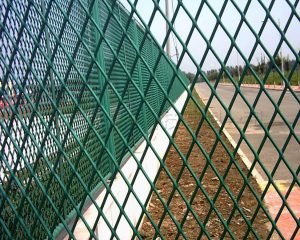Thermosetting Powder Coatings vs. Thermoplastic Powder Coatings: Exploring the Key Differences

Among the different types of powder coatings, thermosetting powder coatings and thermoplastic powder coatings are two prominent options. Understanding their distinctions, including their specific applications, target substrates, and operational processes, is vital for selecting the most suitable coating for different scenarios.
- Thermosetting Powder Coatings:
1.1 Definition:
Thermosetting powder coatings are polymer-based coatings that contain a crosslinking agent or resin. When exposed to heat, the crosslinking agent initiates a chemical reaction, causing the coating to undergo a curing process. Once cured, the coating becomes hard and durable, forming a permanent bond with the substrate. Due to this irreversible chemical reaction, thermosetting powder coatings cannot be melted or reshaped again.
1.2 Applications:
Thermosetting powder coatings find widespread use in industries where a high level of durability and resistance is required. Some common application areas include:
– Automotive: Coating automotive parts and components, such as chassis, wheels, and engine parts.
– Architecture and Construction: Exterior building facades, window frames, fences, and railings.
– Industrial Equipment: Machinery, tools, and metal structures that require protection against corrosion, UV radiation, and chemicals.
1.3 Substrates:
Thermosetting powder coatings are particularly suitable for various metal substrates due to their excellent adhesion and resistance properties. Commonly coated metals include steel, aluminum, and galvanized surfaces. Additionally, thermosetting powder coatings can also adhere well to heat-resistant plastics and glass surfaces.
1.4 Operational Process:
The operational process for applying thermosetting powder coatings involves several steps:
– Surface Preparation: The substrate surface must be thoroughly cleaned to remove any dirt, grease, or rust. Depending on the specific requirements, additional pre-treatments, such as sandblasting or the application of a primer, may be necessary.
– Powder Application: The prepared surface is then coated with the thermosetting powder using various methods, such as electrostatic spray guns or fluidized bed techniques. The powder adheres to the surface due to the electrostatic charge, ensuring a uniform coating.
– Curing: The coated substrate is placed in a curing oven, typically heated between 150°C to 200°C (302°F to 392°F). During the curing process, the powder particles melt and chemically crosslink, forming a continuous, hardened coating.
- Thermoplastic Powder Coatings:
2.1 Definition:
Unlike thermosetting powder coatings, thermoplastic powder coatings do not undergo a chemical reaction during the curing process. Instead, they melt and flow when exposed to elevated temperatures and solidify upon cooling. This reversible melting and solidification process allows for reshaping and re-applying the coating multiple times.
2.2 Applications:
Thermoplastic powder coatings are often chosen for their aesthetic appeal, design flexibility, and ease of application. Common applications can be found in the following industries:
– Electronics: Coating metal or plastic components of electronic devices, providing a decorative and protective layer.
– Appliances: Coating household appliances, such as refrigerators, ovens, or washing machines.
– Consumer Products: Coating various consumer goods, including furniture, lighting fixtures, and sporting equipment.
2.3 Substrates:
Thermoplastic powder coatings can adhere to a wide range of substrates, including metals, plastics, and wood. They are especially suited for heat-sensitive substrates, as they cure at lower temperatures compared to thermosetting coatings. Plastics, including ABS, PVC, and polypropylene, are often ideal for thermoplastic coatings due to the lower curing requirements.
2.4 Operational Process:
The operational process for applying thermoplastic powder coatings is similar to that of thermosetting coatings:
– Surface Preparation: Similar to thermosetting coatings, the substrate surface must be clean, free from contaminants, and properly pre-treated if necessary.
– Powder Application: The thermoplastic powder is applied using electrostatic spray guns or fluidized bed techniques. The powder particles adhere to the substrate due to the electrostatic charge, forming a uniform coating.
– Curing: The coated substrate is heated in a curing oven, typically between 130°C to 180°C (266°F to 356°F). As the temperature rises, the powder particles melt, flow, and form a continuous coating. Upon cooling, the coating solidifies, providing the desired finish.
In conclusion, while both thermosetting and thermoplastic powder coatings offer unique advantages, their differences lie in their chemical properties, applications, target substrates, and operational processes. By selecting the appropriate powder coating based on these factors, manufacturers, fabricators, and applicators can achieve.

 D5 Creation
D5 Creation